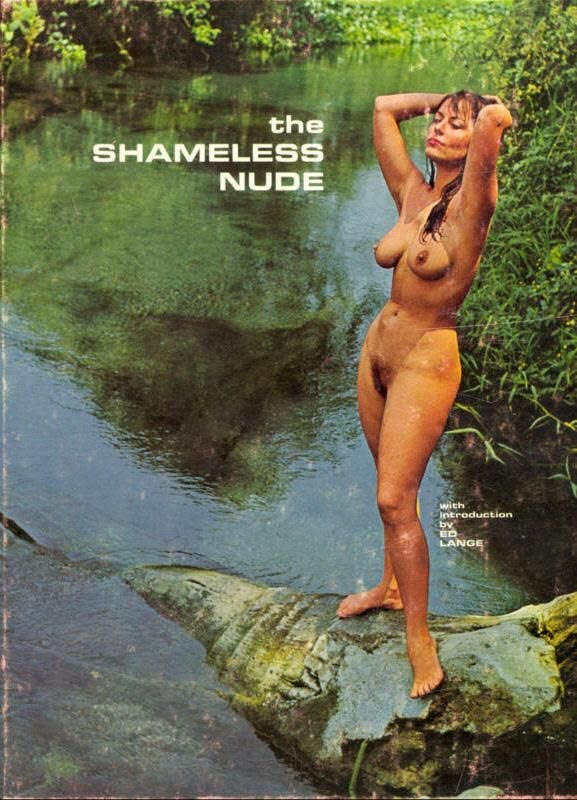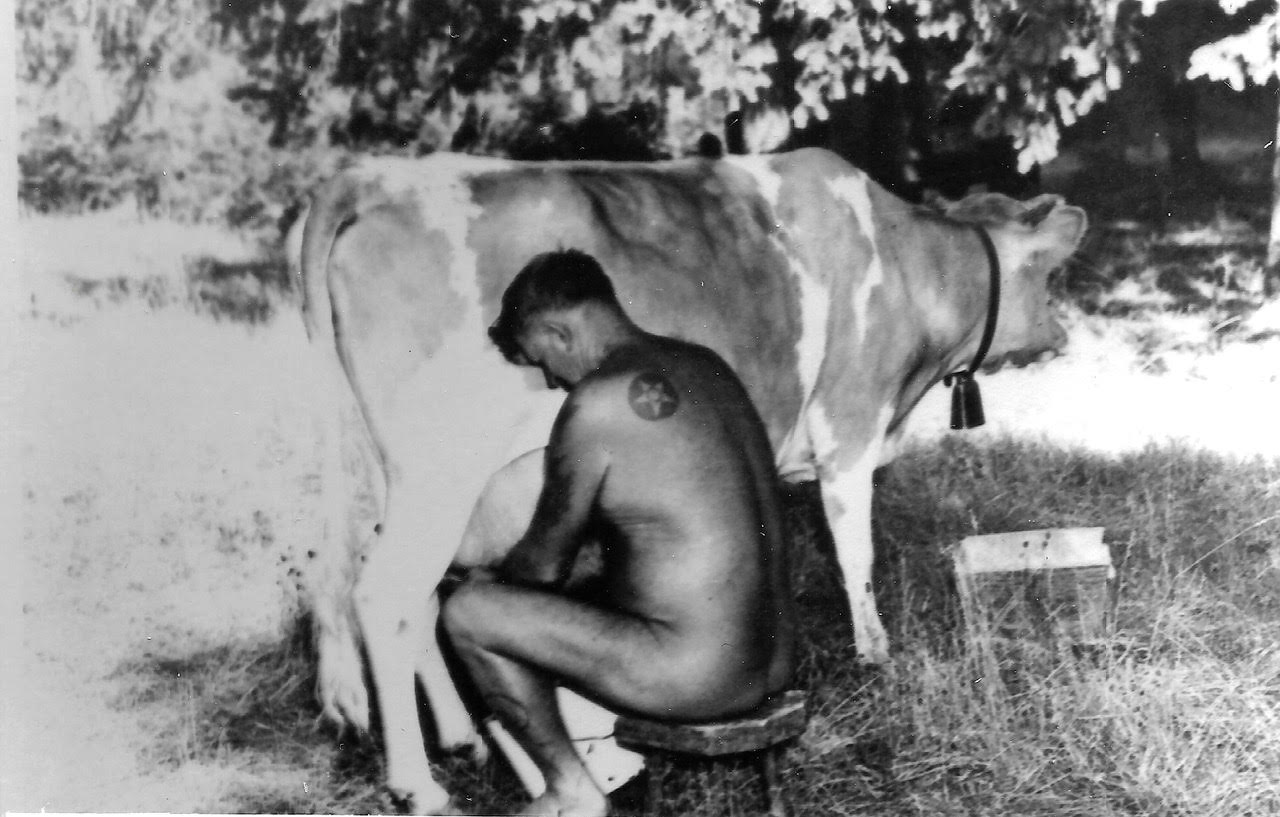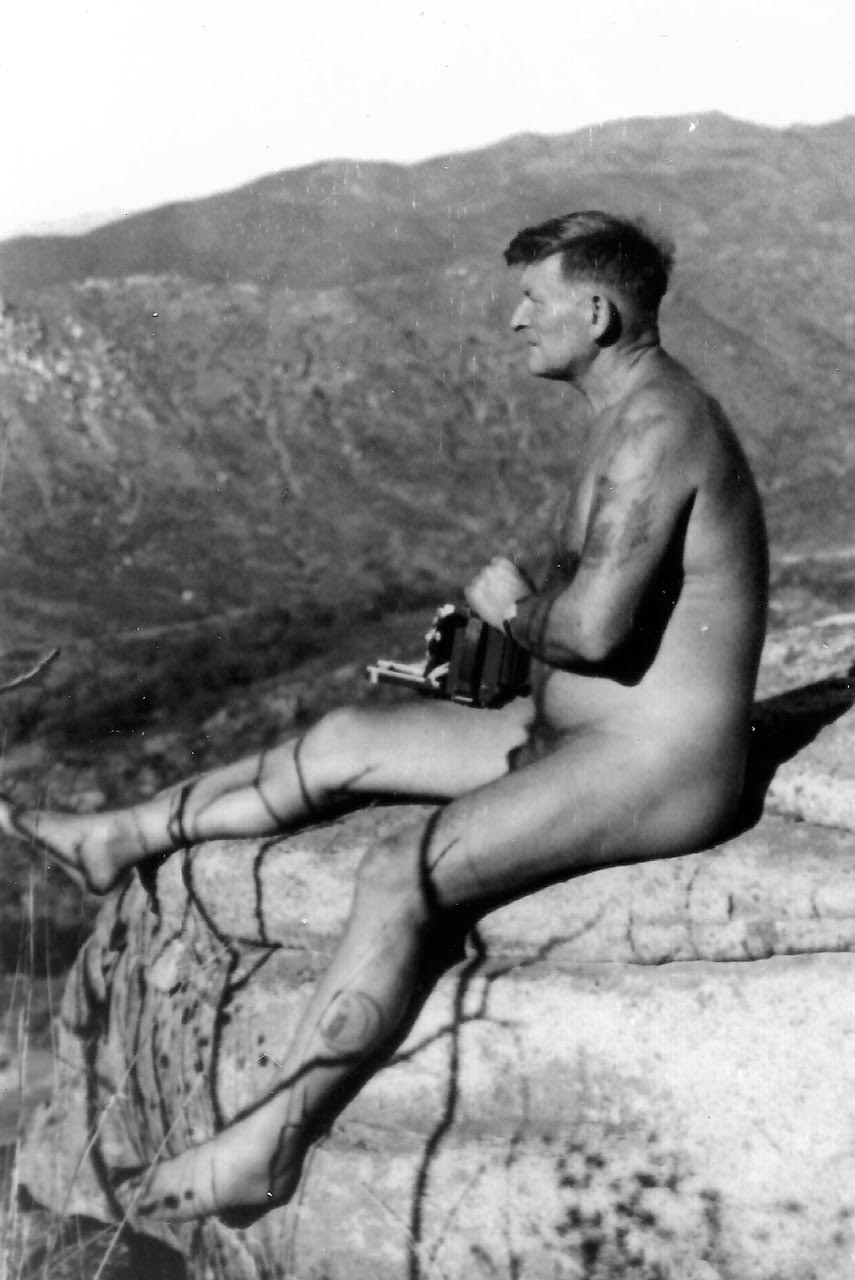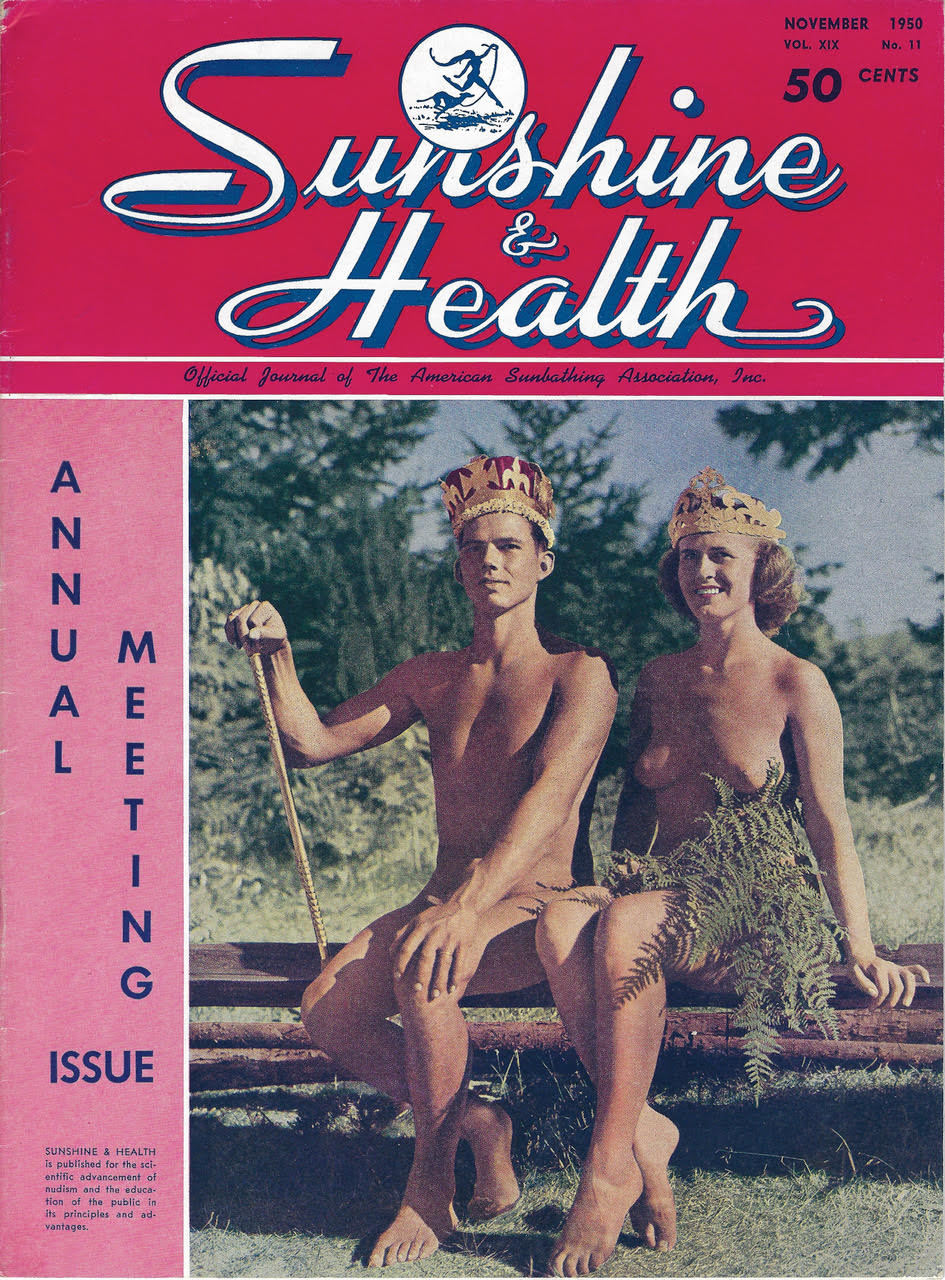Below you’ll find the conclusion of my interview with NV (see here if you missed the first part).
Be sure to follow @NaturistVintage on Twitter if you don’t already. And before we get to the rest of the interview, I’d like to express my deepest, most humble thanks to NV for the fascinating history, information, and perspective. I’m sure we’ll talk again soon!
Although vintage nudist magazines usually show real nudists and not models, they did often depict younger, athletic women (mostly) and men. They seemed to be looking to gain interest through titillation. Would you agree? Do you think there’s a place for this today, or does it diminish nudism’s profile and turn it into just another sort of (very mild) pornography?
Without a doubt. An unfortunate dichotomy of the early nudist movement was that while its primary tenet was non-sexual social nudity, it was essentially underwritten by the publishing business. The sale of the “official organ”—the specific publications to which that title was granted would change hands a few times—helped fund the early American Sunbathing Association and enlist new members, but a sizable market for these magazines (and the photography within their covers) was the textile public; quite naturally, men. In those days you couldn’t go pickup the latest Penthouse at the local liquor store. Obscenity laws forbade the sale of nude photography. A legally sold nudist magazine was the closest they could get.
And the magazines certainly knew this.
Of course, nudists would absolutely read and contribute to these magazines too, which in a pre-internet era were the primary way for nudists to connect and communicate with each other. The early ASA was run by a man named Ilsley “Uncle Danny” Boone, and he also owned the publishing company that produced Sunshine & Health Magazine.

Uncle Danny fought some major battles on behalf of nudism and his magazine, which was censored from delivery by the US Postal Service on multiple occasions. He sued the USPS and spent almost 20 years fighting this censorship in the courts, eventually taking the matter to the Supreme Court. With the argument that nudity is not inherently obscene, he ultimately won the right to publish his magazine. Due to this judgement, it became legal to publish nude photos if they were associated with nudism.
This led to a major uptick in competition for Sunshine & Health in the 1960s, and many of the publishers began to push the boundaries into more prurient content to sell more paper. Eventually Sunshine & Health folded under the competition.
In my opinion, these magazines (and books, films, etc.) enhanced the profile of nudism, which experienced its “golden age” in the 1960s. They also did inexorable harm to nudism’s reputation as a wholesome, clean way of living.
There’s not much of a market for magazines in general these days, let alone nudist publications that are pornographic. Of course, a simple search of the hashtag #nudism on Twitter or Instagram will turn up hundreds of exhibitionists and pornographers incorrectly claiming that label. Some true nudist publications do still exist. The Bulletin, which is the AANR member magazine (and has been in existence in some form or another for over 70 years) or N Magazine by The Naturist Society, are truly by nudists, for nudists. There’s nothing in those magazines that you could call pornographic.
My opinion is that nudism and porn are ethical opposites. I’m not anti-porn, but I think that naturism is about body positivity and freedom, while porn is often about abuse and violence. As a nudist, I don’t want my beliefs—beliefs which I am open about with my family and friends—to be conflated with porn in the minds of the textile public. If all one sees about nudism is how it’s portrayed in porn, one could really get the wrong ideas about how you choose to live your life as an ethical nudist. Who wants that?
To counter-balance that image, I think it’s all the more important for people to be exposed to non-sexual nudity (pun intended). Being nude around other people and seeing other people nude, with all their beautiful imperfections, can demystify the body, which so often gets objectified in our culture.
What do you think these vintage magazines tell us about nudism? What lessons do you think we can draw from them today?
Surprisingly, one thing that amazes me about reading magazines from the 1930s, ’40s, and ’50s is how much of the debate around nudism has not changed in the years since. Some of the issues they dealt with, such as maintaining a gender balance, or managing the understanding of non-nudists, are still in many ways the same.

However, there were also many hardships people in that time dealt with, and it’s important to remember those. In the early days, camps being raided by police and nudists arrested en masse was not uncommon. Nudism was criminalized much more. In many ways, those nudists had to really fight and sacrifice to pave the way for the leisurely poolside nudism we often take for granted today.
There was also a very fascinating optimism that these early nudists felt about their cause that I love. I’ve seen multiple articles that predicted a world in which everyone went nude all the time in public. Looking at this from the year 2020, that concept is downright hilarious. Of course, we don’t live in the same world they lived in then. They witnessed a wonderful growth in nudism during a general period of boom in America. There was a real romanticism in how nudism brought people together in the early part of the 20th century. The leisure-class lifestyle was brought about in part by the automobile and the highway system, both of which were still novel in the 1940s. They didn’t have air travel like we do today. Nudism today, it sadly seems, is in a comparative decline. What was once a legitimate social movement is now basically considered a recreation.
What’s in store for the NaturistVintage twitter account? What’s coming up, and what are your long-term goals?
This whole Twitter project is still new. The account has quickly gained over 5,000 followers in just three months. I have a lot of topics I’d like to explore with it.
My primary goal with the Twitter account was to locate an audience for this history. My hope is that it appeals to textiles as well as nudists. There are so many great stories to tell from this history that are relevant to life today. I would love to make converts for nudism, but even more I’d simply like to give people an understanding of the appeal of nudism and the importance of its history, even if they never have a desire to try it for themselves.
Long term, my goal is to make a documentary film. I’ve been a filmmaker for 17 years. It was from a desire to make a film that I first set out to research my family history, and it’s through this research that I’ve come to learn about how important this history is, and how in danger of being lost it is without storytellers to bring it to the world.
My intention with the Twitter account was to find people out there who are interested in this history, and have a direct line of communication to this potential audience. What I didn’t really expect was that I’d actually find a community of people with whom to share in the joy of nudism and its history.
Thank you again, NV!
What did you think? What would you ask NV if you could? Do you think vintage nudist materials remain important to nudists today? Do you have any yourself? Please share your thoughts in the comments!
Although the twitter account has been active less than four months, @NaturistVintage is already very popular, with over 5,000 followers. NaturistVintage concentrates on posting scans of nudist magazines and photographs, mostly from the 1960s and earlier.
Certainly the parade of naked women, even if they're usually in grainy black and white images, is the reason for much of the account’s popularity. But the owner of the account, who I’ll call NV here, often does more than just put up photos of pretty nude women.
Instead, NV is interested in documenting the modern history of naturism in North America. Often NV will post a series of photos of a single model, or on a certain theme. Many of the personages who shaped the early views of naturism in the public and in the naturist community are highlighted. And NV is actively researching the context around the images as well, often posting new findings in threads as they come to light.
I reached out to NV to ask about the account’s purpose, and to learn more about the person behind the account. My first questions, and NV’s answers, are below.
Tell me about your interest in nudity. Are you yourself a nudist? If so, how long have you been a nudist, and how did you come to adopt the nudist life?
Yes, I am a nudist, though I’m still getting used to saying that out loud. I’ve only been exploring social nudity for less than one year. I am a cottontail by the standards of some nudists, although I’m proud to say I have lost the tan lines.
I discovered nudism through research, naturally. In fact, this whole Twitter documentary project started first as a search into my own ancestry. My great great grandfather was a prominent American nudist in the 1940s and 50s named Rudolph Johnson. He started a group on his own land in rural Washington state in 1946 called the Cobblestone Suntanners, then went on to co-found the Northwest Sunbathing Association a year later. In 1950 he became president of the American Sunbathing Association (the ASA—now known as AANR), during a very tumultuous time in that association’s history.

I grew up with photo albums and tall tales of “Rudy the Nudie” all my life. When I was about thirteen, I spent a summer living on his land (which at the time was still owned by my grandmother) along with a cousin who was about my age. This cousin and I spent the summer fishing, catching frogs, and skinny dipping in the river that ran through the property. Looking back, it was easily one of the happiest summers of my young life, and since then I have always had a fascination with my great great grandfather, and a curiosity about nudism as a result. Growing up, I proudly told others of Rudolph and his nudist legacy, often to strange looks and mixed commentary.
It wasn’t until I became a father last year, and my own father survived a major heart attack a few months later, that suddenly collecting and preserving this heritage took on a new personal urgency and importance for me. I began seeking out any information on Rudolph that I could find, and subsequently discovered that he frequently contributed to old nudist magazines such as Sunshine & Health and American Nudist Leader. Many of these magazines contained photos of him, and some even had his writing. Reading these old magazines, it wasn’t long before my fascination with Rudolph blossomed into a fascination with the nudist movement of the mid 20th century.
Rabidly consuming this history, I eventually found the Western Nudist Research Library on the grounds of Glen Eden Sun Club, about an hour from where I live. I made the drive down and met the late Richard Hirst, a founder of the WNRL. He gave me a full tour of Glen Eden on his golf cart. Incidentally, it was the day of one of their biggest annual summer events, “Nudestock”. There were families and people of all ages jamming out naked to a live band. With that my interest was sufficiently piqued. I came back just one week later with my wife and son and we stayed two days and nights without putting clothes on once. The rest, as the saying goes, is history.
Your posts of vintage naturist magazine scans get a lot of attention on twitter. Tell me about the collection of magazines you’re scanning. Do you own these? How long have you been collecting them? How do you go about acquiring them? Do you also find vintage photos online, or are these all scanned?
My approach has always been to document and educate (hopefully). I try to share what I learn, and include sources wherever possible. I’ve scanned a good portion of what I share myself. I find some of the content online. I’ve also bought dozens of magazines, books, and films through sites like Abe Books, Ebay, Amazon, or boutique sellers like Alta Glamour or Something Weird (two personal favorites out of Seattle). Nearly all of the content I share has been previously published in some form, and much of the physical material I've acquired gets ultimately donated to a research library.

I would not be able to do my research without the four American nudist libraries. These libraries are doing important work to preserve nudism’s history, which is in some danger of being lost to time otherwise. Since discovering the Western Nudist Research Library, I have become involved as a volunteer and now sit on the board. I have yet to visit the American Nudist Research Library in Florida in person, but they’ve been extremely helpful to my research remotely. They’re also an excellent resource for old nudist magazines; they sell their surplus copies for a reasonable donation.
In addition to these two entities, there’s also the Naturist Education Foundation Research Library in OshKosh, WI, and the AANR-NW Library Archive at Willamettans in Eugene, OR. These four separate libraries are even collaborating, on a voluntary basis, to digitize and share their collections together on the cloud, both for preservation and to make the material available to researchers of the future. It’s an impressive and ambitious effort, and it is very much in need of support.
How do you choose the themes you post? For example, you recently had a series on Diane Webber. How do you decide on your themes, and what are you hoping to achieve with them?
In general, I share what I’m learning. The primary condition is that it must be related to the history of nudism in some way, beyond just nudity or nakedness. I love the shared humanity of the people participating in this weird, social lifestyle together. There’s something both vulnerable and strong about a person who chooses to go as they are without cover. I believe that one of the best things that nudism has to offer society is a stronger sense of body acceptance and self love. I think it can have effective therapeutic results. I try to share bodies of all ages and sizes for that reason, not just pinup models.
Diane Webber is a great example of an exception that proves the rule. She, obviously, was literally a pinup model. She was also easily one of the most famous nudists ever. Plainly, she was an icon and a sex symbol.
What I tried to emphasize by sharing the wide variety of her work in one thread, was how prolific she also was as an artist and human. She was in films and television, featured on the covers of magazines and advertisements, and worked with acclaimed photographers and directors. I’ve seen her called the most photographed person in the world. I personally question the truth of that, but she was easily the most photographed nudist in the world. Everyone knows the hits; not as many people know the b-sides. So my goal was just to connect some of those dots.
Part Two of my discussion with NaturistVintage is now published! Check it out here!
